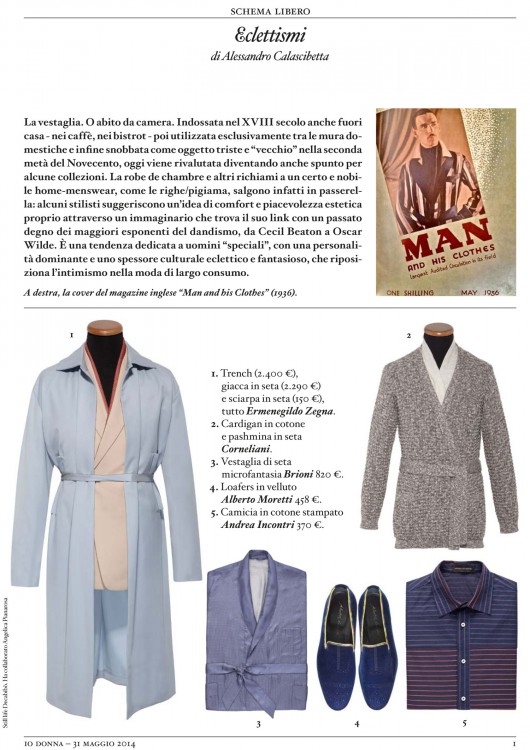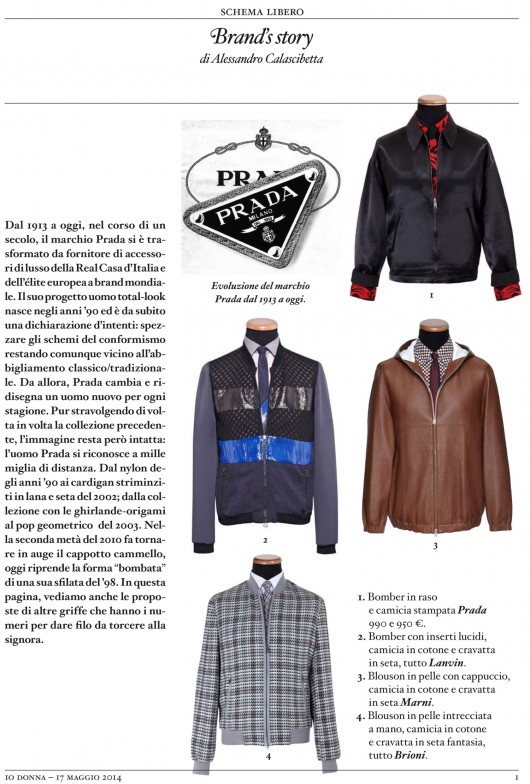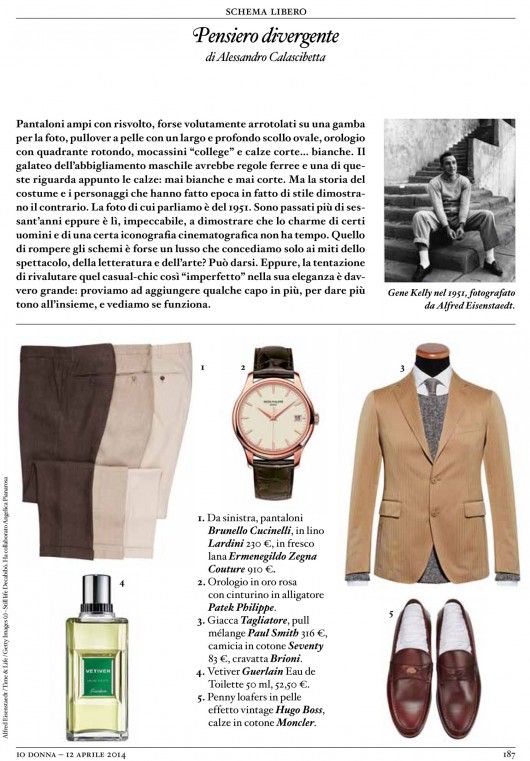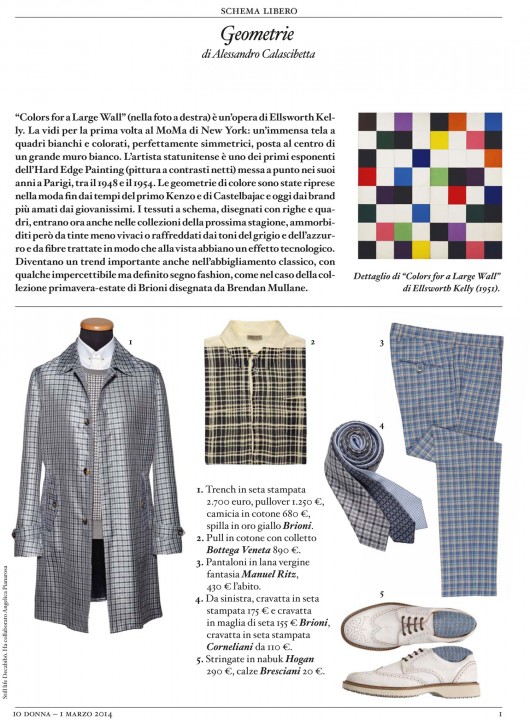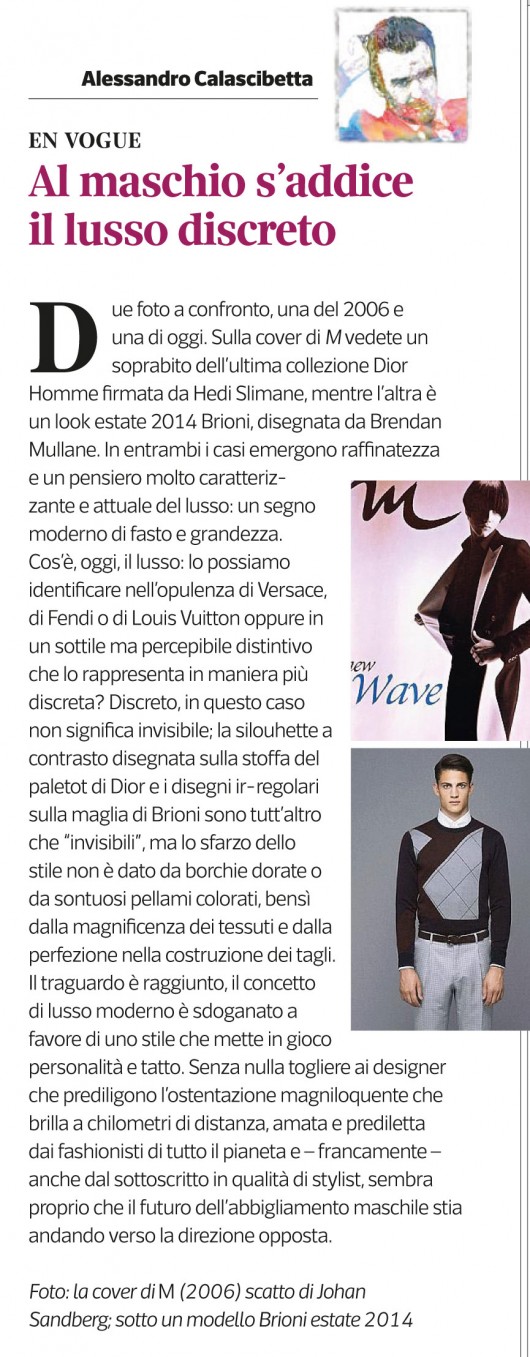SCHEMA LIBERO ECLETTISMI
Eclecticisms. The dressing gown. Worn in the 18th century in cafes and bistrot, then used only at home, and finally snubbed as a dismal and “ancient” garment in the second half of the 20th century, today it has been reevaluated, becoming a strating point for some collections. The robe de chambre and other recalls to a certain noble home-menswear, like the pajamas’ stripes, are infact on the catwalks: some designers suggest an idea of comfort and beauty linked to the main exponents of dandyism in the past, from Cecil Beaton to Oscar Wilde. This is a trend dedicated to “special” men, with a leading personality and an eclectic and creative cultural depth, that places intimism in consumer fashion. On the right, the cover of the UK magazine “Man and his Clothes” (1936).





